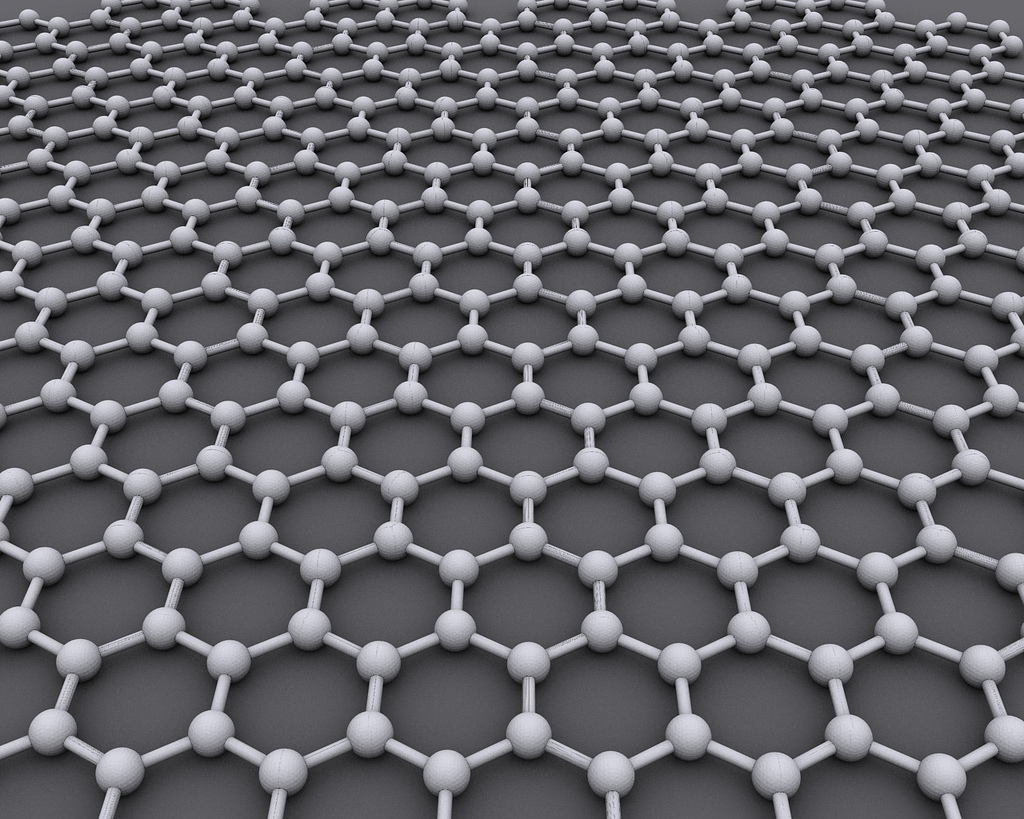Image courtesy of AlexanderAIUS.
In 2004, with tape and a lump of graphite, researchers discovered graphene—a two-dimensional hexagonal lattice of carbon atoms with many industrial applications. Graphene-strengthened cement is lighter and stronger than ordinary cement. Graphene-added batteries have longer battery lives and charge faster than ordinary batteries. However, scaling up graphene production is expensive and often requires additional chemical treatments. To tackle these issues, a team of scientists from the James M Tour Group at Rice University recently developed an alternative method for graphene production through a process known as flash heating.
Senior author Dr. Duy Luong and his team fired a short, intense burst of electricity through a sample of household carbon sources—including used coffee beans and mixed plastic waste—which vaporized the carbon content to form surprisingly pure graphene. The Rice University researchers reported that flash heating is a safe, inexpensive, and environmentally friendly alternative with potential for larger scale industrial production.
The laboratory setup consisted of carbon sources sandwiched between two electrodes in a tube. By concentrating the electrical heating in that small region, the carbon can reach over 3000 K (5000° F) in milliseconds. Flash! And the graphene arrives. This high temperature may seem dangerous but as Professor James Tour explained, “The outside of the tube holding the carbon is not even hot—you can put your finger on the tube, because it is not like heating a furnace. Most excess energy comes out as light, not excess heat.” Traditional furnaces, by contrast, expend significant amounts of energy to heat the surroundings rather than just the sample. In addition, raw graphite needs to be mined, adding to costs for traditional graphene production. “It takes $100 of electricity per ton by flash heating. Mining graphite alone costs $2000 per ton, before even processing it. We don’t heat the furnace, so heat goes straight into the [carbon],” Tour said.
Subsequently, the team performed Raman spectroscopy analysis to determine the purity of the graphene sample. After optimizing the setup current and time duration, the researchers observed a yield between 80 to 90 percent without further purification. The graphene output by this method was stacked disorderly in its 3-dimensional state, unlike the structures in ordinary graphite. Graphene’s lack of strong bonds between layers allows it to form quickly after flash heating, visibly dispersing into solutions and composites.
This discovery that graphene could be produced by flash heating was actually quite unexpected. “We did not set out to do it. A student read a paper about Flash Joule Heating which discussed making new phases of nanoparticles. But when he put carbon between two cathodes, he noticed graphene was deposited,” Tour said. This inspired the team to attempt production of graphene instead of other nanoparticles.
Furthermore, the flexibility of carbon sources that can be used in flash heating opens up more options. Professor Tour elaborated, “It is currently too expensive to use recycled plastic [in postconsumer products]. But in a flash, the whole thing becomes graphene, which never enters the carbon cycle. Graphene is non-toxic and microbes won’t eat it. It’s a terminal stop for carbon that won’t go into landfills.” Compared to carbon dioxide removal, flash heating preserves oxygen, whereas carbon dioxide still traps two oxygen atoms per carbon atom stored.
Flash heating carbon waste is an attractive, environmentally friendly method to generate graphene at low cost with high efficiency. Tour has started a spin-off named Universal Matter from Rice University to commercialize and scale up this research.

